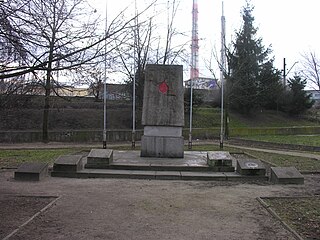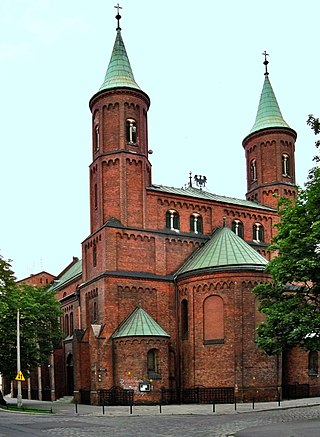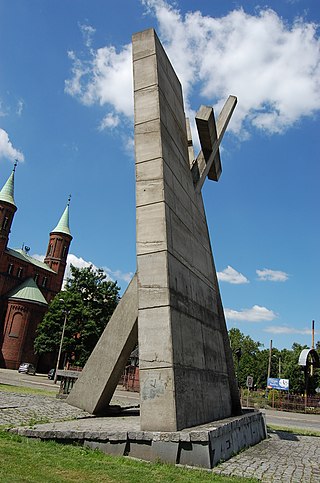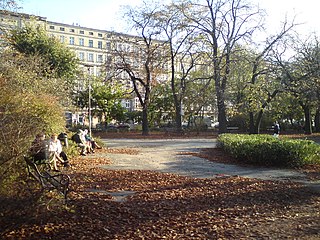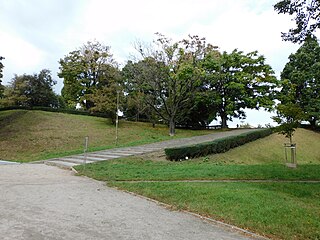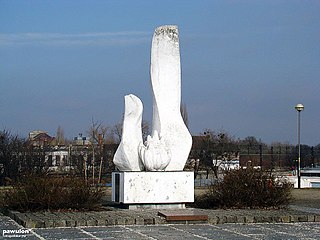Self-guided Sightseeing Tour #8 in Wrocław, Poland
Legend
Tour Facts
2.4 km
27 m
Experience Wrocław in Poland in a whole new way with our self-guided sightseeing tour. This site not only offers you practical information and insider tips, but also a rich variety of activities and sights you shouldn't miss. Whether you love art and culture, want to explore historical sites or simply want to experience the vibrant atmosphere of a lively city - you'll find everything you need for your personal adventure here.
Individual Sights in WrocławSight 1: W hołdzie patriotom różnych narodowości straconych w latach 1939-1945
Obelisk in Honour of the Murdered Patriots – a monument located in Wrocław on the square at the intersection of Reymonta and Kleczkowska Streets. It commemorates the victims of Nazism, murdered in a nearby prison.
Sight 2: Kościół Świętego Bonifacego
Church of St. Boniface – a Roman Catholic parish church of the parish of St. Boniface in Wrocław, belonging to the deanery of Wrocław Cathedral of the Archdiocese of Wrocław. It is located in the Nadodrze housing estate.
Sight 3: Zesłańcom Sybiru
Monument to the Siberian Deportees in Wrocław — a monument designed by the sculptor Jarosław Perszko in close artistic cooperation with the engineer and architect Czesław Bielecki, erected in Wrocław on the Sybiraków Square next to Strzelecki Square. The silhouette of the monument, 12 meters high, depicts the Latin Cross piercing the wall.
Sight 4: Park Staszica
Stanisław Staszic Park in Wrocław – a park located in the Nadodrze housing estate, with an area of about 5.5 ha. The park was built in the years 1905–1908 on the site of the former horse market (Rossplatz). The current name is in force on the basis of the Resolution No. LXXI/454/93 of the City Council of Wrocław of 9 October 1993 on the names of parks and forest areas existing in Wrocław.
Sight 5: Dworzec Wrocław Nadodrze
Wrocław Nadodrze – a railway station and the penultimate of all standard-gauge railway stations built in Wrocław, built in 1868 according to the design of Hermann Grapow, who is often confused with Wilhelm Grapow, the author of the Upper Silesian Railway station designed several years earlier, which in 1857 replaced the old Upper Silesian Railway Station and today is called Wrocław Główny. The station is located on the railway line No. 143 connecting Kalety and Wrocław Popowice, at Powstańców Wielkopolskich Square in the Nadodrze housing estate. It is an important station within the Lower Silesian Agglomeration Railway and in intra-city traffic.
Sight 6: Wzgórze Słowiańskie
The Slavic Hill in Wrocław is an artificially raised hill located in the Nadodrze housing estate in Wrocław at Słowiański Square. It covers an area of about 3 ha. It is surrounded by a small park – a tree stand.
Sight 7: Pomnik wyzwolenia Wrocławia
The Monument to the Liberation of Wrocław – a monument erected in Wrocław on the Slavic Hill.
Share
Disclaimer Please be aware of your surroundings and do not enter private property. We are not liable for any damages that occur during the tours.
GPX-Download For navigation apps and GPS devices you can download the tour as a GPX file.
